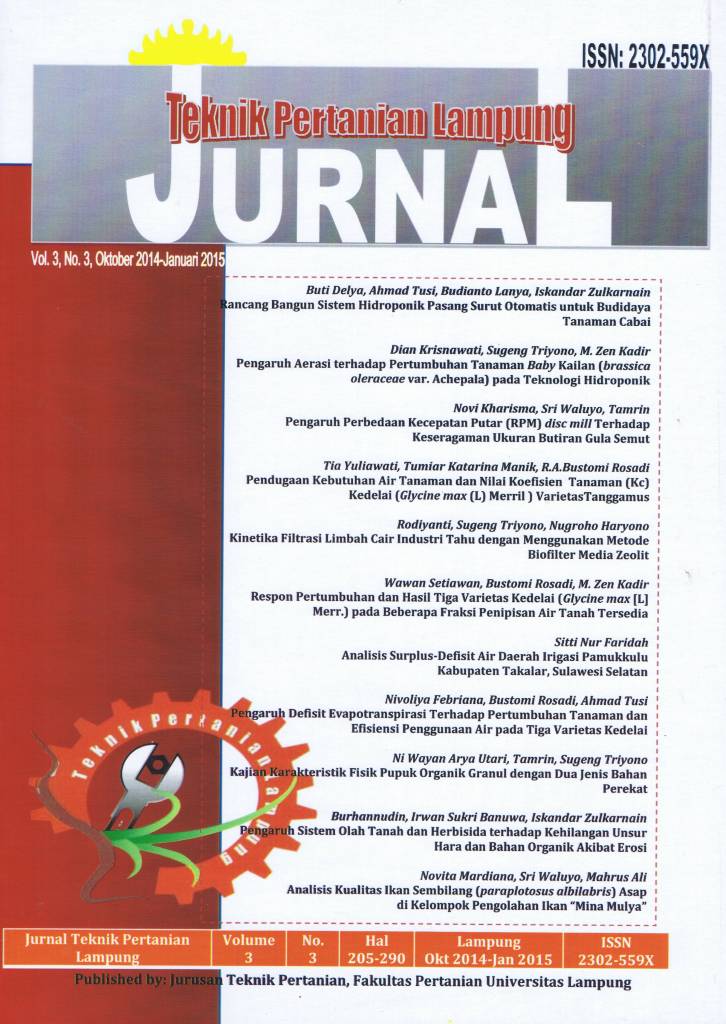RESPONSE OF GROWTH AND YIELD OF THREE VARIETY OF SOYBEAN (Glycine max [L] Merr.) ON SOME AVAILABLE SOIL WATER DEPLETIONS
Abstract
The aims of this research was to find out the effect of available soil water depletion on the growth andyield of three varieties of soybean (Glycinemax [L]Merr.). This study used a factorial ina completely randomized
design (CRD)with 2 factors, namely factor I (Available soilwater depletion fraction, p) and Factor II (Variety, V).
Each treatment consisted of 3 levels, factor I consists of P1(0.2), P2(0.4) and P3(0.6) of available soil water
depletion, and factors II consists of three variety,Wilis (V1), Kaba (V2) andTanggamus (V3), with repeats 3 times.
Reference evapotranspiration measurements on P(0.2) is done using the grass plant. The results showed that
treatment of available soil water depletion fraction (p), varieties, and their interactions were not significantly
different, on the growth and production. All three varieties of plant did not experience stress during growth and
development stage until harvest. The highest productionwas inTanggamus varieties (V3) in P1(0.2) of 17.86 g/pot
with a total of 80.430 ml of irrigation water, followed by Kaba (V2) on P1(0.2) 15.23 g/pot with total irrigation
water 75.800ml andWillis (V1) on P3(0.6) 14.96 g/potwith a total of 75.600ml of irrigationwater. The smaller
of available soil water depletion fraction the higher of evapotranspiration (ETc). Crop yield response factor to
water (Ky) greater than 1 (Ky>1), this means that the decrease of relative production larger than decrease of
relative evapotranspiration.
Downloads
Published
2015-01-30
Issue
Section
Articles
License
- Authors who publish with this journal agree to the following terms:
- Authors retain copyright and grant the journal right of first publication with the work simultaneously licensed under a Creative Commons Attribution-ShareAlike 4.0 International Lice that allows others to share the work with an acknowledgement of the work's authorship and initial publication in this journal.
- Authors are able to enter into separate, additional contractual arrangements for the non-exclusive distribution of the journal's published version of the work (e.g., post it to an institutional repository or publish it in a book), with an acknowledgement of its initial publication in this journal.
- Authors are permitted and encouraged to post their work online (e.g., in institutional repositories or on their website) prior to and during the submission process, as it can lead to productive exchanges, as well as earlier and greater citation of published work (See The Effect of Open Access).
Jurnal Teknik Pertanian Lampung

JTEPL is licensed under a Creative Commons Attribution-ShareAlike 4.0 International License.

